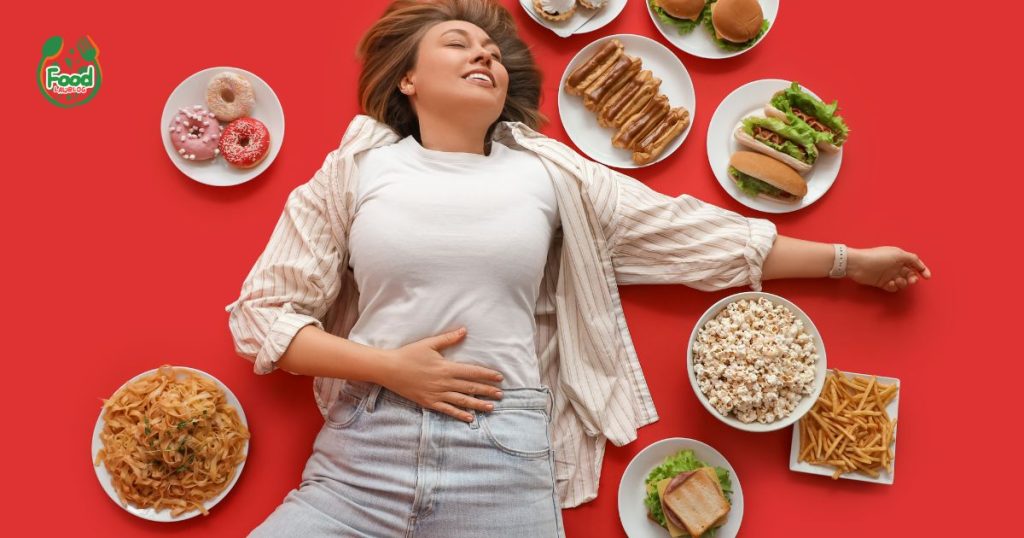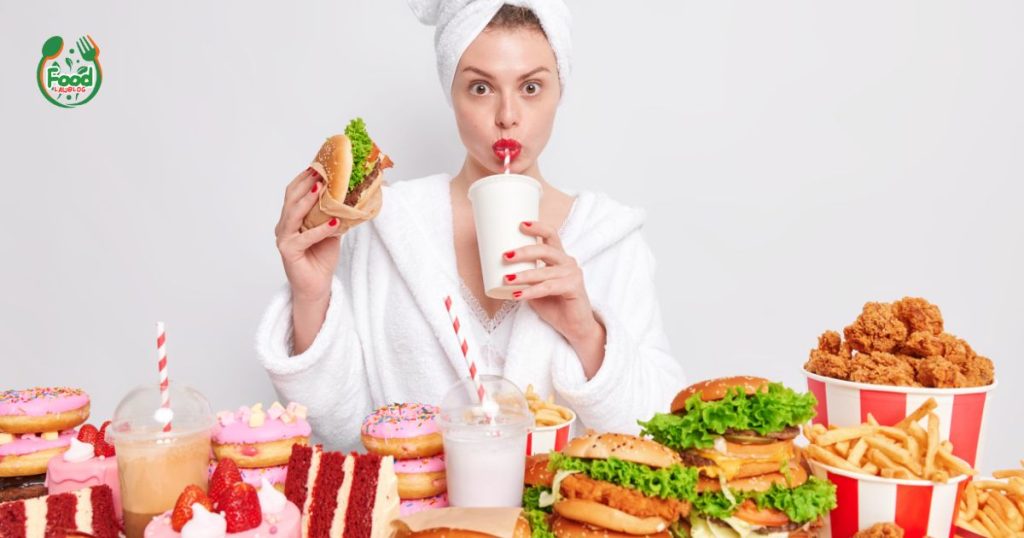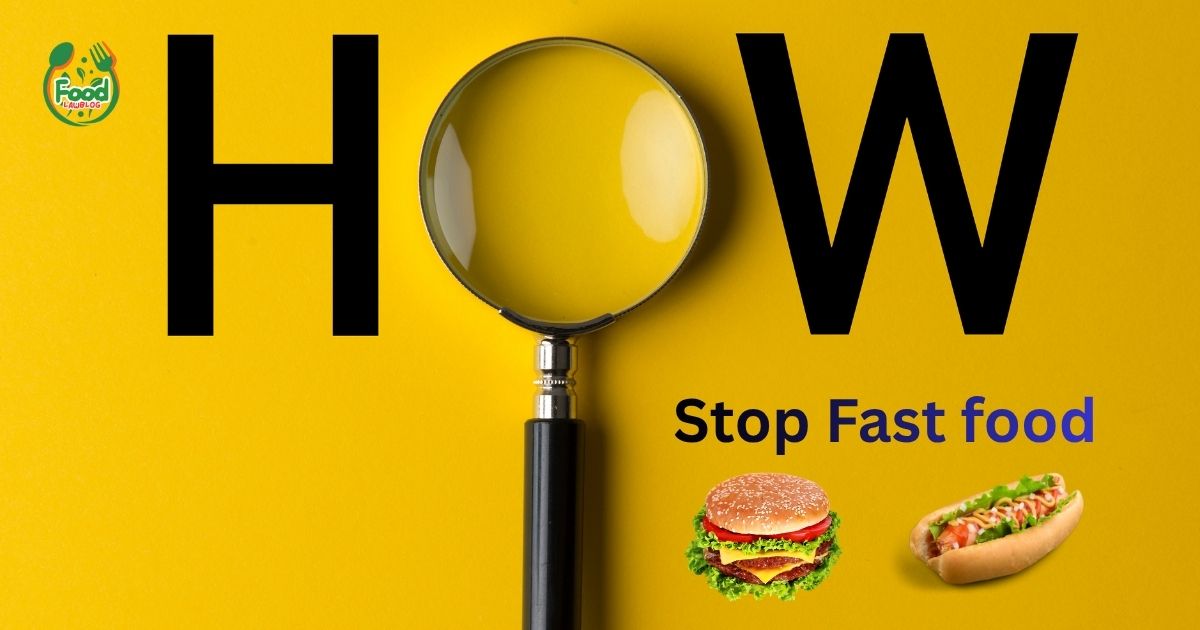Introduction
How to Stop Fast Food Addiction: The glow of the golden arches, the convenience of a drive-thru, the instant satisfaction of a hot, salty, and savory meal in minutes—fast food holds a powerful allure in our modern lives. It promises a quick fix for hunger and a reliable comfort on a stressful day. But when the occasional treat becomes a daily necessity, and cravings feel more like commands, it may be time to reassess your relationship with these convenience foods.

Breaking the cycle of fast food consumption is more than a matter of willpower. It involves understanding the intricate science of how these foods are engineered to keep you coming back for more, from the way they manipulate your brain’s reward system to the habit loops they create. This comprehensive guide offers a clear and actionable roadmap for 2026 and beyond. You will learn the ‘why’ behind your cravings and the ‘how’ to dismantle them, one sustainable step at a time. We will explore nutritional strategies, behavioral science techniques, and environmental design to help you regain control, improve your health, and break free from the fast food cycle for good.
The Science of the Craving: Why Fast Food is So Hard to Quit
Understanding the root cause of your fast food habit is the first step toward changing it. It’s not a personal failing; it’s a biological and psychological response to highly engineered products. Teams of scientists design these foods to achieve the “bliss point”—a perfect combination of sugar, salt, and fat that makes them irresistible.
The Dopamine Reward Pathway Explained
At the core of any addiction-like behavior is dopamine, a neurotransmitter in your brain associated with pleasure and reward. When you consume a hyperpalatable fast-food meal, your brain releases a surge of dopamine, resulting in a feeling of intense satisfaction.
Your brain remembers this pleasurable experience. The next time you see a fast food commercial (the cue), your brain anticipates the reward and starts to crave it. Giving in and eating the food (the routine) delivers the dopamine hit (the reward), reinforcing this powerful cycle. Over time, your brain’s reward system can become desensitized, requiring even more fast food to achieve the same level of pleasure, mirroring the patterns seen in substance use disorders.
Deconstructing the Habit Loop: Cue, Routine, Reward
Habits are automatic behaviors that our brains create to save energy. The fast food habit operates on a simple but powerful loop:
- Cue: The trigger that initiates the behavior. This could be driving past a favorite restaurant, feeling stressed after work, seeing an ad on your phone, or simply noticing the time of day.
- Routine: The action you take—driving to the fast food outlet, ordering the usual meal, and eating it.
- Reward: The positive feeling you get from the routine. This is the dopamine rush from the food itself, but it can also be the relief from stress, the convenience of not having to cook, or the comfort of a familiar taste.
To stop fast food addiction, you can’t just eliminate the routine. You must identify your cues and find a new, healthier routine that provides a similar reward.
The Sugar-Salt-Fat Triad: Engineered for Overconsumption
Fast food isn’t just food; it’s a product. Ultra-processed foods are formulated to bypass your body’s natural satiety signals. The combination of refined carbohydrates, unhealthy fats, and high sodium levels creates a sensory experience that your brain finds difficult to resist. The rapid spike in blood sugar, followed by a crash, often leaves you feeling hungry again shortly after eating, perpetuating a cycle of overconsumption and cravings.
Your Toolkit for Change: A Multi-Pronged Approach
Breaking free requires a holistic strategy that addresses your biology, environment, mind, and daily routines. Here is a comprehensive toolkit to help you build a healthier lifestyle.
Strategy 1: Nutritional Fortification
You can fight cravings from the inside out by giving your body the nutrients it actually needs. A well-nourished body is less susceptible to the siren call of empty calories.
Prioritize Protein and Fiber
Protein and fiber are your two best friends in the fight against cravings. They promote satiety, meaning they help you feel full and satisfied for a longer period. They also help stabilize blood sugar levels, preventing the energy crashes that often trigger a desire for a quick sugar hit.
- Protein Sources: Lean meats, poultry, fish, eggs, legumes (beans, lentils), tofu, and Greek yogurt.
- Fiber Sources: Whole grains (oats, quinoa, brown rice), fruits, vegetables, nuts, and seeds.
Aim to include a source of protein and fiber in every meal. A breakfast of oatmeal with berries and nuts, for example, sets you up for success far better than a sugary pastry.
Hydration Is Non-Negotiable
Sometimes, your brain mistakes thirst for hunger. Before you give in to a craving, drink a large glass of water and wait 15 minutes. Staying consistently hydrated throughout the day can significantly reduce false hunger signals and help maintain stable energy levels.
Understanding the Gut Microbiome
The trillions of bacteria in your gut play a surprisingly large role in your cravings, mood, and overall health. A diet high in ultra-processed foods can lead to an imbalance in your gut microbiome, favoring bacteria that thrive on sugar. Conversely, a diet rich in fiber from diverse plant sources (fruits, vegetables, whole grains) nurtures beneficial bacteria, which can help regulate appetite and reduce inflammation.
Strategy 2: Redesign Your Food Environment
Your environment is one of the most powerful drivers of your behavior. If healthy options are convenient and unhealthy options are difficult to access, you are far more likely to make better choices.
Sanitize Your Home and Workspace
Start by removing temptation. Go through your pantry, refrigerator, and desk drawers and discard the junk food. This includes sugary drinks, chips, candy, and instant noodles. You can’t eat what isn’t there. This simple act creates a crucial barrier between a craving and the act of consumption.

Make Healthy Food Visible and Accessible
Replace the junk food with nutritious alternatives and place them in plain sight.
- Keep a bowl of fresh fruit on your kitchen counter.
- Pre-cut vegetables, such as carrots, celery, and bell peppers, should be stored at eye level in the fridge.
- Portion out nuts, seeds, and healthy trail mix into small bags for easy grab-and-go snacks.
Plan for Your Commute and Travel
The daily commute is a major trigger for many. If you drive past multiple fast food outlets on your way home from work, you are fighting a battle every single day. Try altering your route, even if it adds a few minutes to your trip. If you rely on fast food during road trips, pack a cooler with healthy sandwiches, snacks, and drinks instead.
Strategy 3: The Behavioral Science Toolbox
Leverage proven techniques from psychology and behavioral science to rewire your habits and strengthen your impulse control.
Master Mindful Eating
Before you eat, ask yourself: “Am I truly hungry, or am I bored, stressed, or tired?” When you do eat, savor each bite. Notice the textures, flavors, and aromas. Eat slowly and without distractions, such as your phone or the TV. This practice can help you derive more satisfaction from smaller portions of healthier food and short-circuit mindless eating.
Implement Habit Stacking
Instead of trying to create a new habit from scratch, “stack” it onto an existing one. This technique, popularized by author James Clear, links a new desired behavior with a current daily habit.
- “After I have my morning coffee, I will pack a healthy lunch for work.”
- “When I finish work for the day, I will immediately change into my workout clothes.”
- “After I brush my teeth at night, I will lay out my breakfast ingredients for the morning.”
Acknowledge Cravings, Don’t Fight Them

When a craving strikes, don’t try to suppress it with sheer force. That often makes it stronger. Instead, acknowledge it non-judgmentally. Say to yourself, “I am noticing a craving for French fries right now.” Then, practice “urge surfing”—imagine the craving as a wave. Watch it build, crest, and then gradually subside. Cravings are temporary; they typically last only 15 to 20 minutes. Find a distraction to ride it out, like going for a short walk, calling a friend, or working on a hobby.
Strategy 4: The 30-Day Fast Food Freedom Plan
This structured plan breaks down the process into manageable weekly goals. The key is consistency, not perfection. If you slip up, get back on track with the next meal.
Week 1: Awareness and Preparation
The goal of this week is to gather data and prepare your environment.
- Day 1: Track your current fast food habits without judgment. Note what you eat, when, where, and how you feel before and after.
- Day 2: Identify your top 3 fast food cues (e.g., stress, boredom, specific time of day).
- Day 3: Clean out your pantry and fridge. Dispose of ultra-processed snacks and drinks.
- Day 4: Go grocery shopping with a list. Refer to a budget-friendly grocery list to stay on track.
- Day 5: Prepare one healthy meal at home. It could be a simple dinner.
- Day 6: Practice mindful eating with one snack. Eat it slowly, without distractions.
- Day 7: Review your log from Day 1. Plan one alternative, healthy routine for each of your identified cues.
Week 2: Implementation and Replacement
This week focuses on actively replacing fast food meals with home-prepared ones.
- Day 8: Pack a healthy lunch for work.
- Day 9: Drink eight glasses of water throughout the day.
- Day 10: Try a new healthy recipe for dinner. Involve your family if possible.
- Day 11: When a craving hits, drink a glass of water and go for a 10-minute walk.
- Day 12: Plan your meals for the upcoming weekend, a common time for fast food consumption.
- Day 13: Cook a larger batch of a healthy meal to have leftovers for the next day. Explore a healthy meal prep guide for ideas.
- Day 14: Treat yourself to a non-food reward for a successful week (e.g., watch a movie, take a long bath, buy a new book).
Week 3: Building Resilience
This week is about handling challenges and solidifying your new habits.
- Day 15: Identify a potential social situation where you might be tempted (e.g., lunch with coworkers). Plan your strategy ahead of time (e.g., suggest a healthier restaurant, eat beforehand).
- Day 16: Focus on your “why.” Write down three reasons you want to stop eating fast food (e.g., more energy, better health, save money).
- Day 17: Incorporate a 20-minute session of physical activity.
- Day 18: If you feel an intense craving, use the “urge surfing” technique.
- Day 19: Experiment with adding more flavor to your home-cooked meals with herbs and spices instead of salt.
- Day 20: Prioritize sleep. Aim for 7-8 hours, as lack of sleep can increase cravings for high-calorie foods.
- Day 21: Reflect on your progress. Notice how you feel physically and mentally compared to Week 1.
Week 4: Solidifying and Future-Proofing
The final week is about making your new lifestyle sustainable for the long term.
- Day 22: Plan a week of dinners using family dinner recipes that are both healthy and delicious.
- Day 23: Practice a 5-minute mindfulness or breathing exercise to manage stress, a key trigger for cravings.
- Day 24: Calculate the money you’ve saved this month by not eating fast food.
- Day 25: If you’re on the road, choose the healthiest option available or rely on pre-packed healthy travel snacks.
- Day 26: Share your success with a supportive friend or family member.
- Day 27: Think about maintenance. How will you handle holidays, vacations, and unexpectedly busy days?
- Day 28-30: Continue practicing your new habits. Plan your meals for the upcoming week and celebrate completing the 30-day plan.
Long-Term Success: Maintenance and Relapse Prevention
Breaking the fast food habit is a journey, not a destination. The goal is not perfection but lasting change.
- The 80/20 Rule: Aim to eat healthy, whole foods 80% of the time. This allows for flexibility and makes the lifestyle sustainable. If you consciously decide to have a fast food meal as an occasional, planned treat, that is very different from a compulsive, habit-driven action.
- Identify Your Warning Signs: Learn to recognize the early signs of slipping back into old habits. Are you feeling more stressed? Is your meal planning becoming less consistent? Early intervention is key.
- Have a Relapse Plan: If you have a day where you fall back into old patterns, don’t spiral into guilt. One unhealthy meal doesn’t undo weeks of progress.
- Continue to Evolve: As you get healthier, your tastes will change. You may find that fast food no longer tastes as good as you thought it would. Continue to explore new healthy recipes and activities that bring you joy.
Conclusion: Taking Back Control of Your Plate and Your Life
Quitting fast food is a transformative act of self-care. It’s about reclaiming your health, your energy, and your power of choice from an industry designed to override them. By understanding the science behind your cravings and systematically applying nutritional, environmental, and behavioral strategies, you can dismantle the habit loop piece by piece.
This is not about a restrictive diet; it is about building a life where you are nourished, energized, and in control. Use the 30-day plan as your launchpad, but remember that every healthy choice you make is a victory. The journey to stop fast food addiction is a powerful step toward a healthier and more vibrant you.

Internal Linking Opportunities (Anchor Text Suggestions)
- Healthy Meal Prep Guide: Link to a blog post with step-by-step instructions and recipes for weekly meal preparation.
- Sugar Cravings Explained: Link to an article detailing the science behind sugar addiction and how to manage it.
- Mindful Eating Checklist: Link to a downloadable PDF or a page with a simple checklist for practicing mindful eating.
- Budget-friendly grocery list: Link to a resource that provides a template or example of a grocery list focused on affordable, healthy staples.
- Workplace Wellness Ideas: Link to a post offering tips for staying healthy at the office, including packing lunches and handling catered meetings.
- Family Dinner Recipes: Link to a recipe section or roundup post featuring healthy, crowd-pleasing meals.
- Healthy Travel Snacks: Link to an article with ideas for portable, non-perishable snacks suitable for road trips and flights.
- Stress Management Techniques: Link to a guide on evidence-based methods for reducing stress, including breathing exercises, meditation, and exercise.
Outbound Authority Link Suggestions
- CDC dietary guidelines: Link to the official Dietary Guidelines for Americans.
- NIH nutrition: Link to the National Institutes of Health’s nutrition research portal.
- WHO ultra-processed foods: Link to a World Health Organization publication or fact sheet on the health impacts of UPFs.
- FDA labeling: Link to the FDA’s guide on how to read and understand nutrition facts labels.
- USDA MyPlate: Link to the USDA’s MyPlate resource for building balanced meals.
- Peer-reviewed habit formation research: Link to a seminal study on habit formation, such as work by Phillippa Lally or Charles Duhigg, available on a reputable academic journal site.
Frequently Asked Questions (FAQ)
1. Can You Stop Craving Fast Food in 30 Days?
While it varies, many people report a significant reduction in cravings after 2-4 weeks of consistently avoiding ultra-processed foods and eating a nutrient-dense diet. Your taste buds and brain pathways begin to adapt, making whole foods more appealing.
2. Is it better to quit fast food cold turkey or gradually?
This depends on your personality. Some find the “cold turkey” approach of a 30-day challenge effective for a clean break. Others prefer a gradual approach, such as reducing from five times a week to three, then to once a week.
3. Can you really be “addicted” to fast food?
While not a formal clinical diagnosis like substance addiction, the term “fast food addiction” describes the addiction-like behaviors many experience. The intense cravings, loss of control, and impact on brain reward pathways (dopamine) are scientifically documented and share similarities with substance use disorders.
4. What is the healthiest thing to order if I absolutely must eat fast food?
If you’re in a pinch, look for grilled chicken sandwiches or salads. Opt for water or unsweetened iced tea instead of soda, and skip the fries and sugary desserts.
5. How do I handle social situations where everyone is getting fast food?
You have a few options: eat a healthy meal beforehand to avoid hunger; suggest a restaurant with more nutritious options; or look up the menu ahead of time to find the best possible choice. Your health goals are important, and it’s okay to prioritize them.
6. I don’t have time to cook. What can I do?
Meal prepping is a game-changer. Dedicate a few hours on the weekend to cooking in bulk. Roast a tray of vegetables, cook a large batch of quinoa or brown rice, and grill some chicken breasts. This allows you to assemble quick, healthy meals in minutes during the week.
7. Does a “dopamine detox” from fast food actually work?
A “dopamine detox” is a non-clinical term for taking a break from high-stimulation activities, including eating hyperpalatable foods. The goal is to allow your brain’s reward pathways to reset and become more sensitive to natural rewards. A 30-day break from fast food serves a similar purpose, often reducing the threshold of pleasure needed from food.
8. How does poor sleep affect my fast food cravings?
Lack of sleep disrupts hormones that regulate appetite. This hormonal imbalance, combined with reduced impulse control from fatigue, makes you more likely to crave high-calorie, high-fat foods.
9. Can exercise help me stop eating fast food?
Absolutely. Exercise is a powerful tool. It helps manage stress (a major trigger of cravings), boosts dopamine naturally (providing an alternative reward), and improves insulin sensitivity, which helps regulate blood sugar levels and reduce cravings.
10. I quit for a week but then relapsed. How do I get back on track?
Do not view it as a failure. Acknowledge what triggered the relapse, learn from the experience, and immediately return to your healthy habits with your very next meal. A single misstep does not erase all your progress.
11. Is it possible to lose weight just by quitting fast food?
For many people, yes. Fast food meals are often extremely high in calories, unhealthy fats, and refined carbohydrates. Replacing these with nutrient-dense, home-cooked meals can naturally lead to a calorie deficit and subsequent weight loss, along with improved overall health.
12. How does the rise of delivery apps and notifications affect fast food addiction?
Digital ordering platforms and push notifications act as powerful, constant cues. They make impulse ordering frictionless, bringing the temptation directly to your phone. A key strategy is to delete these apps from your phone, or at the very least, turn off all notifications to create a barrier and reduce environmental triggers.
<script type="application/ld+json">
{
"@context": "https://schema.org",
"@type": "BlogPosting",
"mainEntityOfPage": {
"@type": "WebPage",
"@id": "https://foodlawblog.com/"
},
"headline": "Game-Changer: How to Stop Fast Food Addiction 2026",
"description": "How to Stop Fast Food Addiction: The glow of the golden arches, the convenience of a drive-thru, the instant satisfaction of a hot, salty, and savory meal in minutes—fast food holds a powerful allure in our modern lives. It promises a quick fix for hunger and a reliable comfort on a stressful day. But when the occasional treat becomes a daily necessity, and cravings feel more like commands, it may be time to reassess your relationship with these convenience foods.",
"image": "https://foodlawblog.com/wp-content/uploads/2025/11/how-to-stop-fast-food-addiction-4.jpg",
"author": {
"@type": "Person",
"name": "Habibur Rahman",
"url": "https://foodlawblog.com/about-us/"
},
"publisher": {
"@type": "Organization",
"name": "Habibur Rahman",
"logo": {
"@type": "ImageObject",
"url": "https://foodlawblog.com/wp-content/uploads/2025/11/cropped-cropped-latest-1.png"
}
},
"datePublished": "2025-11-09",
"dateModified": "2025-11-09"
}
</script>

